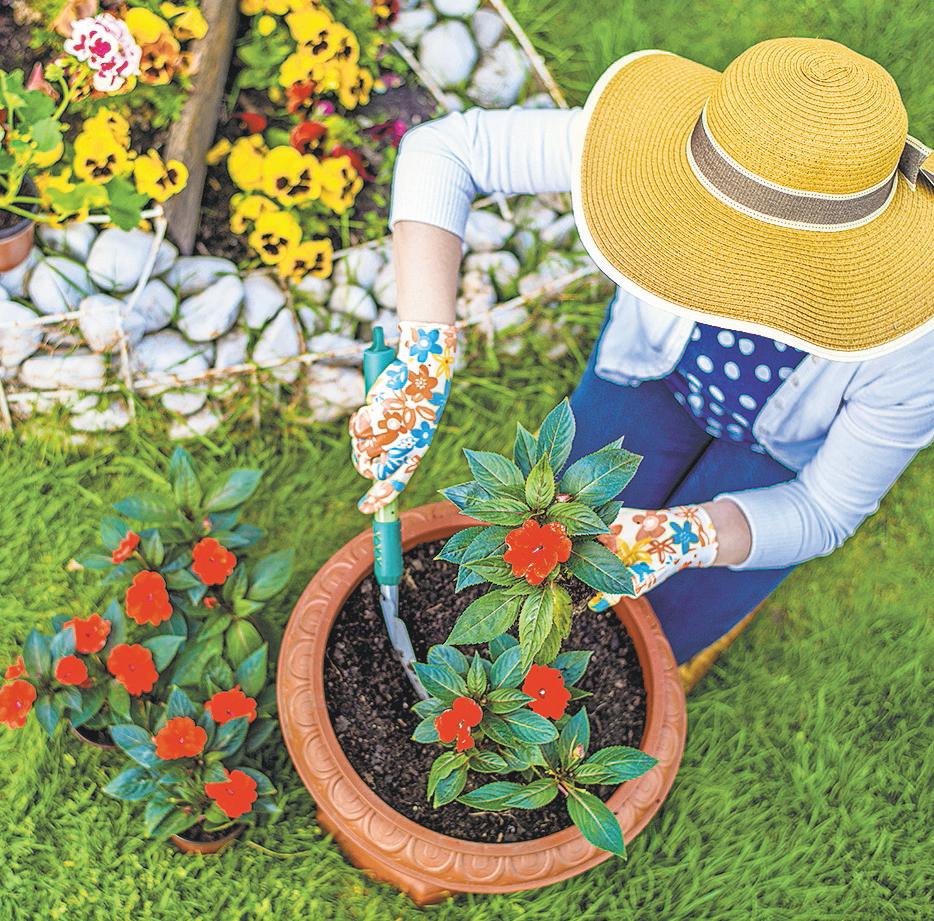
3 minute read
Protect your plants from winter weather
For the majority of gardening enthusiasts, gardening is a warm weather activity. While some people live in climates that make it possible to enjoy gardening yearround, those who don’t often lament the end of the gardening season.
Winter might not be conducive to gardening, but the arrival of cold weather does not necessarily mean a gardener’s work is done until the following spring. Taking steps to protect plants from winter weather is an important part of maintaining a healthy garden that thrives from year to year.
Timing is of the essence when winterizing a garden. The online gardening resource Get Busy Gardening! advises gardeners that the best time to winterize is after the first hard freeze in the fall. A hard freeze occurs when temperatures dip below freezing overnight. When that occurs, annual plants and vegetables are killed off and perennial plants, which grow back year after year, begin going dormant.
Better Homes and Gardens notes that perennials are the easiest plants to prepare for winter, as they require just a little cutting back and mulching to be safe from cold weather. But no two perennials are alike, so homeowners should consult their local gardening center for advice on how to prepare their particular perennials for the coming months.
The steps necessary to winterize annuals depends on which type of annuals, cool- or warmclimate, you have. Coolclimate annuals should be covered with polyspun garden fabric when light frost is in the forecast. In addition, Better Homes and Gardens recommends pulling dead annuals and adding them to a compost pile after a killing frost. Any annuals that developed fungal disease should be discarded. Mulch annual beds with a three- to four-inch layer of chopped leaves or similar materials, spreading as a nutritious food source. Gather the leaves and let the goats munch before you further rake and compost the leaves.
Decorations
Natural leaves can be used as decorations both inside and outside a home. String freshly fallen leaves together and wrap them around a grapevine wreath for a rustic door decoration. Leaves can be placed in clear vases and put on display for a cheap way to showcase some autumn color. Preserve favorite leaves with a lamination machine or by sealing them between heated sheets of waxed paper. Cut out the leaf shapes and use for hanging window decorations.
Recreation
Leaves have long been favorite toys for children, who eagerly await jumping into large piles of fallen leaves. Fill paper bags with leaves and draw a target on the front. Let kids test their skill aiming for the targets. Children can camouflage their clothing with leaves and masking tape and have a more intense session of “hide and seek.” the mulch only two inches thick over self-sown seeds you want to germinate in the spring.
Warm-climate annuals also should be covered with polyspun garden fabric when light frost is expected. Seeds of cold-hardy annuals can be planted for extended winter bloom, while gardeners also can collect seeds of warmweather plants that will breed true to type. Even though you’re winterizing, Better Homes and Gardens recommends that gardeners continue to weed and water their plant beds and plants while also keeping an eye out for pests. If organic mulch has decomposed or thinned out, replace it with a new layer.
Get Busy Gardening! notes that the bulbs of tender plants like dahlias and tuberous begonias can be dug up and over-
Clean Up
From Page 1 can also make faster work of gathering leaves into piles.
The home improvement resource The Family Handyman advocates for the use of a lawn sweeper. This is a manual device that has a rotating sweeping brush that gathers up lawn debris and leaves into an attached hopper bag. Like mowed leaves, the bag can be emptied into a compost pile or distributed where needed.
Raking leaves onto a large tarp is another option. Once it’s full, the tarp can be taken to the curb where many towns will collect the leaves seasonally. Otherwise, the tarp can be used as a funnel to put leaves into a gardening bag or another appropriate receptacle. Leaf blowers remain a fast option for cleaning up yards, but they require electricity or gas and can be noisy. Still, they are a popular choice for large landscapes or when quick work needs to be made of leaf cleanup. Leaves will fall in autumn, but luckily homeowners have various methods at their disposal to tame the mess. wintered in their dormant state. All dead foliage should be removed after the bulbs have been dug up, and the bulbs should be allowed to dry out a little before being stored. Container gardeners can overwinter their tender bulbs in their pots inside, but be sure to remove their foliage and store them in a dark, cool place that maintains temperatures above freezing.
Winterizing may mark the end of gardening season, but it’s an important task that can ensure a healthy, beautiful garden next spring, summer and fall.











